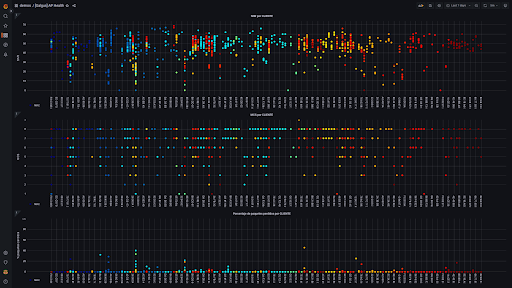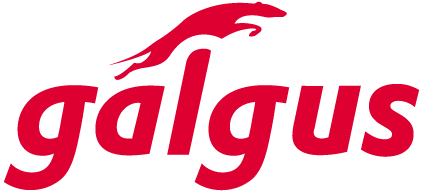Managing Wi-Fi networks in professional environments requires a solution that covers everything from provisioning and configuration to continuous monitoring and predictive analytics.
Galgus offers an ecosystem of tools designed to optimize every phase of the network lifecycle, ensuring configuration consistency, constant visibility, and the ability to anticipate problems before they affect the user.
Best practices for optimal Wi-Fi network management
To ensure maximum performance and reliability, it’s essential to implement a set of best practices that go beyond simply installing access points. These guidelines range from configuration standardization to automation and advanced diagnostics, allowing the network to always be in optimal condition.
Standardization through templates
Take advantage of Galgus Cloud Manager’s ability to create and apply JSON configuration templates that define radios, SSIDs, VLANs, encryption, and bandwidth limits.
These templates are organized by organization and can be applied in bulk to multiple devices, facilitating mass deployments and ensuring consistency across the entire infrastructure.
Hierarchical management of organizations and roles
Define subordinate organizational structures to reflect your corporate organizational chart, allowing you to delegate responsibilities and isolate configuration areas.
Implement a Role-Based Access Control (RBAC) model to ensure that each administrator only has access to assigned functions and sites.
Continuous monitoring with telemetry and real-time events
Configure periodic telemetry streams to collect CPU, memory, interface usage, and critical event metrics, and enable real-time reporting for incidents that require immediate attention. Adjust event intervals and types based on your network’s operational needs.
Automatización de políticas de radio
It uses the platform’s integrated Cognitive Hotspot Technology (CHT) modules to automate load balancing, smart roaming, and traffic congestion management.
These functions dynamically optimize channels, bandwidths, and transmission powers, adapting in real time to interference conditions and user density.
Health analysis and advanced diagnostics

Complement basic monitoring with Galgus Network Health, which offers:
- Overall Network Health: An index from 0–100 summarizing coverage, capacity, airtime, latency, and hardware.
- AP Details: Nine critical KPIs to quickly identify degraded access points and their cause (radio, cabling, hardware, or client).
- Time series and histograms: to detect anomalies in CPU, memory, latency and channel occupancy.
- Forecasting: Nightly Bayesian prediction of KPIs for the next seven days, helping to anticipate peak loads.
- Correlation and detection of problematic clients: MCS vs. SNR or CPU vs. RAM graphs allow you to isolate patterns and diagnose whether the cause of the degradation is specific devices or insufficient coverage.
Upgrade planning and proactive response
Schedule firmware rollouts during low-activity windows from Cloud Manager and set up automatic alerts when critical thresholds (e.g., SNR 50 ms) are exceeded, integrating notifications with your ticketing system to reduce incident response times.
Team training and empowerment
Train administrators on interpreting dashboards and configuring templates, telemetry, and CHT modules. Ensure each role (operations, security, NOC) has customized views that reflect their key KPIs and enable them to act quickly.
Galgus tools for comprehensive management
Galgus has designed two main solutions that, combined, cover all the management, monitoring, and analysis needs of a Wi-Fi network. Below, we describe their features and benefits so you can deploy and operate your infrastructure with complete confidence.
Galgus Cloud Manager
Galgus Cloud Manager is the multi-tenant cloud platform that centralizes the provisioning, configuration, and monitoring of TIP OpenLAN-based APs, switches, and routers. Its main functions are:
- JSON template management to apply standard configurations at scale.
- Customizable dashboards with drag-and-drop widgets and filters by organization, site, or time period.
- RBAC access control, which defines permissions at the role, organization, or site level.
- Firmware update orchestration, with scheduling and status reporting.
- Unified view of licenses and services: includes CHT, Network Health, Location Intelligence, and Galgus Connect.
Galgus Network Health

Network Health is the telemetry and analytics solution that assesses the health of the network and each AP, enabling managers and technicians to:
- Obtain a global and per-AP index on a 0–100 scale, based on coverage, capacity, airtime, latency, and hardware.
- Browse time series and histograms to identify anomalies in CPU, memory, process, and channel occupancy.
- Apply nightly Bayesian forecasting to predict usage trends and size capacity.
- Correlate variables and detect problematic clients for surgical interventions.
Adopting these practices and leveraging the capabilities of Cloud Manager and Network Health transforms Wi-Fi network management into a proactive, automated, and data-driven process, ensuring reliable, secure, and scalable connections to meet current and future demands.
If you’d like to learn more about how to get the most out of them, don’t hesitate to contact our colleagues.









